This is the second part looking at a history of the Elephant and Castle area of south London. To read the first instalment please click here

The Elephant at war
Being a major transport hub with a large civilian population, the Elephant and Castle was bombed heavily during World War Two.
The worst raid to hit the area took place on the 10th May 1941, when bombers deliberately targeted the south London district in order to create a ferocious firestorm which rapidly engulfed the Elephant.
After the war much of the Elephant lay in ruins, a shadow of its pre-war days when Londoners had flocked there to indulge in its many shops and places of entertainment.
A concrete renaissance
For over a decade, the Elephant remained pretty much in tatters, pitted by numerous bomb craters which provided exciting playgrounds for local kids.
In March 1958, the down-at-heel area received a welcome dash of American glamour when rock and roll star, Buddy Holly played to a huge audience at the Elephant and Castle’s Trocadero.

Buddy Holly, backstage at the Elephant & Castle Trocadero, March 1958. (Image by Bill Francis, from Patrick Sweeney website)
To read more about Buddy Holly’s time in London, please click here.
*
Meanwhile, behind the scenes, town planners were hard at work, drawing up plans for a massive redevelopment of the area… for Elephant and Castle was about to become a huge canvas for some of London’s most prominent post-war architecture.
The importance of the vast rebuild was summed up in 1956, when the London County Council stated:
“The Council regards the Elephant and Castle as one of its most important comprehensive reconstruction projects. A unique opportunity is presented for creating a new shopping, business and recreational centre for south London, for effecting major traffic improvement and for realising fine, civic design.”
The new road-layout was the first part of the scheme to be implemented, with two huge roundabouts stamped down during the 1950s.
This prominent road system was highly representative of the mood of planners at the time, who envisioned a future in which the motor car would be king.
Consequently, little thought was given to those who had to traverse the Elephant on foot and, to this day, pedestrians are forced to cross the area via a series of gloomy, narrow subways.
It was during the 1960s that the majority of the Elephant was rebuilt; the architects’ love affair with concrete and stark urban planning resulting in the heart of the district evolving into a landscape more akin to communist East Berlin…
The very first building to be completed at the new Elephant was the Faraday Memorial; an avant-garde electricity sub-station, clad in stainless steel and plonked in the middle of the northern roundabout.
Unveiled in 1961 as a taste of things to come, the Faraday Memorial can still be seen in its original location, un-disturbed by the many millions of vehicles which have roared around it during the past fifty years.
Next to pop up was Alexander Fleming House which opened in 1963.
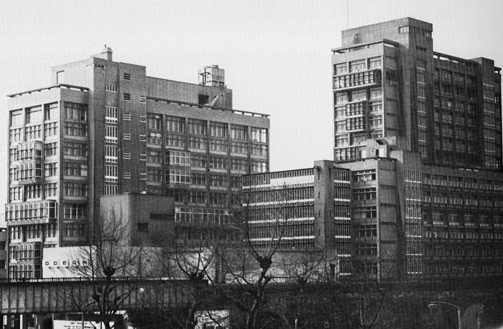
Alexander Fleming House. Now known as ‘Metro Central Heights’, the exterior of this 1960s development has since been fitted with blue and white cladding. (Image- Design Museum)
Originally designed as a triple set of office blocks, Alexander Fleming House has since been converted into luxury apartments and renamed Metro Central Heights (or, as some like to jokingly call it, Metro Sexual Heights; a reference to the many young, urban professionals who now reside there!)
The modern trio of towers was designed by Erno Goldfinger, the infamous architect noted for his bold, uncompromising buildings… and egotistically fierce temper!
To find out more about the curmudgeonly Goldfinger, please click here for my earlier post on the ‘Trellick Tower’ which is widely regarded as his true masterpiece.
*
Lost cinemas
Goldfinger would go onto wield great influence over the Elephant and Castle.
In 1966, he incorporated an Odeon cinema into Alexander Fleming House… which was rather fitting considering the complex was built on the site of the former Trocadero which had been demolished a few years after Buddy Holly’s celebrated visit.
Designed in the Brutalist style, the modern Odeon contained seats for over 1,000 movie-goers.
Sadly, the cinema was demolished in 1988 which is a real shame as, given current trends, I have a feeling it would have found a new lease of life as an independent picture-house had it been allowed to remain.
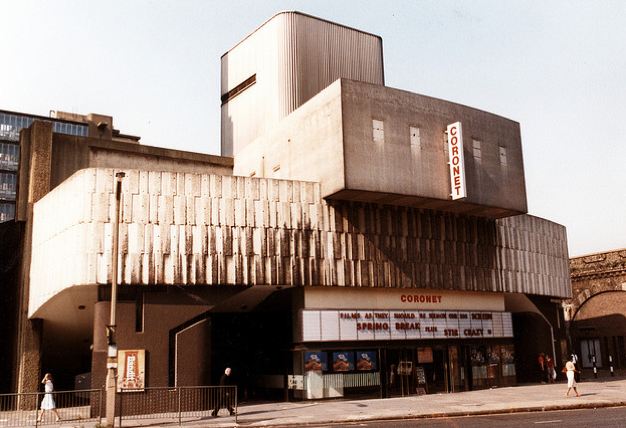
The Odeon at Elephant and Castle in 1983- by which point it had been renamed the ‘Coronet’ (many thanks to flickr user dusashenka for this rare image)
*
Tickled pink
In 1965, yet another Goldfinger creation was unveiled in the area… the Elephant and Castle Shopping Centre.
At the time, this new building was revolutionary; the first covered shopping complex in Europe.
Locals however who, for generations had patronized traditional local shops and markets, were slow to embrace the new concept.
When the shopping centre first opened, trade was painfully slow with just 29 out of 120 shop units being occupied.
Originally providing three floors for trade, it quickly became clear that this was one floor too many.
In 1978 the centre was purchased by Ravenseft Properties who promptly converted the third level into office space. As a spokesman for the company said at the time, “one has to do something when one has inherited such a horrible asset!”
In 1990, the powers that be thought it would be a good idea to paint the Elephant and Castle shopping centre bright pink, a colour which remained on the building until very recently.
I’ve often wondered what the idea behind this lurid scheme was. Not that I have anything against pink, but I was under the impression that a ‘pink elephant’ was something one only saw after a few to many sherries!
Some rather creepy pink elephants can be seen in the following excerpt from the 1941 Walt Disney classic, Dumbo, in which the lovable little elephant hits the booze rather too hard…
The Heygate Estate
By far the largest post-war project to grace the Elephant and Castle was the vast Heygate Estate, which was completed in 1974 and provided homes for 3,000 people.
Designed by Tim Tinker, the Heygate Estate was very much a product of its time; a huge housing scheme conjured on an incredibly ambitious scale, and designed with the best of intentions in mind.
Aiming to make the estate an oasis of calm away from Elephant’s characteristic roar of traffic, Tim Tinker placed the tallest of the tower blocks around the perimeter, encircling and shielding smaller accommodation and areas of greenery within the middle.
When viewed from above, it is indeed surprising just how much greenery the Heygate encompassed.
However, as with many estates, the utopian ideal quickly became sour, with the modern innovations having quite the opposite effect of their intended purpose.
The towering apartment slabs isolated their inhabitants, slicing off communities rather than drawing them together, whilst the windswept walkways and secluded communal areas provided fertile breeding ground for crime and anti-social behaviour.
Unfortunately, unlike other examples of London Brutalist architecture- such as the Trellick Tower, National Theatre and Barbican Centre- the Heygate has received no revival and is currently undergoing demolition.
Thanks to the large amounts of asbestos present, the destruction is a slow process, not expected to be completed until 2015.
At present, the drawn out wrecking of the Heygate has made the old estate quite an atmospheric place; a vast, inner-city chunk of quiet decay, rather like something out of a post-apocalyptic film.
Despite being eerily deserted, at the time of writing, a tiny handful of residents are refusing to leave their homes on the Heygate in protest at Southwark council’s compulsory purchase order.
This small but hardy bunch include an elderly couple with a leasehold… both of whom are in their 80s and, like their small band of remaining neighbours, see the Heygate as their rightful home…
*
The Elephant on Film
Thanks to its present state, the Heygate has proved a popular location for movie makers in recent years, with Southwark Council raking in a substantial £91,000 in filming fees since 2010.
Two films to make substantial use of the estate are Harry Brown and Attack the Block.
Released in 2009, Harry Brown stars Sir Michael Caine who, just like Sir Charles Chaplin a generation before, spent his tough working-class childhood in the Elephant and Castle area.
In Harry Brown, the popular actor plays a pensioner after whom the film is named; an ex-soldier living out his twilight years on a hellish council estate.
One night, Harry has to rush to hospital, where his wife is dying.
Despite the emergency, he is too terrified to take a short-cut as the subway in question is plagued by gangs and drug-fuelled violence. His failure to take the shorter route means that he is unable to be at his beloved wife’s bedside when she passes away…
This, coupled with the murder of his friend who also resided on the estate, leads the pensioner to turn vigilante…a very grim film indeed.
*
Being a comedy, Attack the Block is one of the more cheery films to emerge from the Heygate Estate.
Released in 2011, this movie centres on a gang of youths… who find themselves having to defend their turf against an alien invasion!
As can be seen in the following trailer, the Heygate Estate played an integral part in the story:
More recently, the Heygate has been used as a backdrop for World War Z; a horror film in which the world is gradually taken over by zombies.
Due for release in 2013, the film stars Brad Pitt, who spent time on the estate filming some rather terrifying looking night scenes…
*
The Heygate is not the only the only area of the Elephant and Castle which has been used as a filming location.
In the 2011 film, The King’s Speech, Iliffe Street, just south of the junction towards Kennington, was used to represent a road in fashionable West London.
In 1968, the then brand new shopping centre featured in The Strange Affair which starred Michael York.
In 1987’s gangster film, Empire State, the young protagonist and his moll live in Draper House, their balcony overlooking the Elephant’s large twin roundabouts.
In 1982, the Elephant loaned its streets to the music industry when Brook Drive– which lies just west of the junction behind the Metropolitan Tabernacle, was used to film the video to the much-loved hit, Come on Eileen by Dexy’s Midnight Runners.
Please click below to view:
In the past year, I have had two fares to Brook Drive and, in both cases, each of the passengers stated how chuffed they were to live on the same street where this hit, which seems to be played at every single wedding reception, found a home for its video!
Below is a photo of the Brook Drive newsagent as it appears today:
Also in 1982, Dexys Midnight Runners released The Celtic Soul Brothers which was filmed on the other side of the Thames at the Crown Pub in Cricklewood- please click here to read more).
*
All change at the Elephant
Today, the Elephant and Castle is undergoing its biggest change since WWII.

A smashed up information board outside the Elephant shopping centre. Hopefully, such ugly scenes will soon be a thing of the past…
As part of a £1.5 billion scheme, the 1960s shopping centre is due to be demolished and replaced with a pedestrianized market square and green open spaces.
As for the Heygate Estate, once that has been fully knocked down, the empty land will be replaced with 2,500 new homes, of which it is sad 25% will be “affordable”… I suppose that means the other 75% will be unaffordable then…
Overall, the change at the Elephant is estimated to take some 15 years.
At present, the most prominent sign of this slow evolution is the Strata Building; a new tower which replaced Castle House and has been nicknamed by some Londoners as the ‘Lipstick’ building.
The Strata contains 310 luxury housing units, retail space at ground level and, most famously, three wind-turbines on its roof which are used for powering a small percentage of the tower’s utilities.
Wether of not these new developments will last longer than their 1960s predecessors remains to be seen… however, one thing is for sure- they are merely the next stage in the long and varied history of the Elephant and Castle.
***











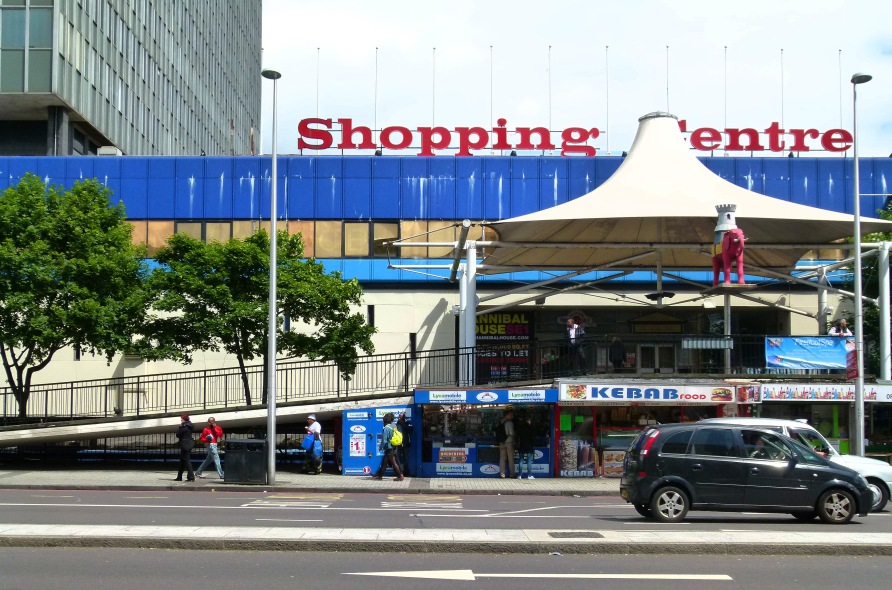







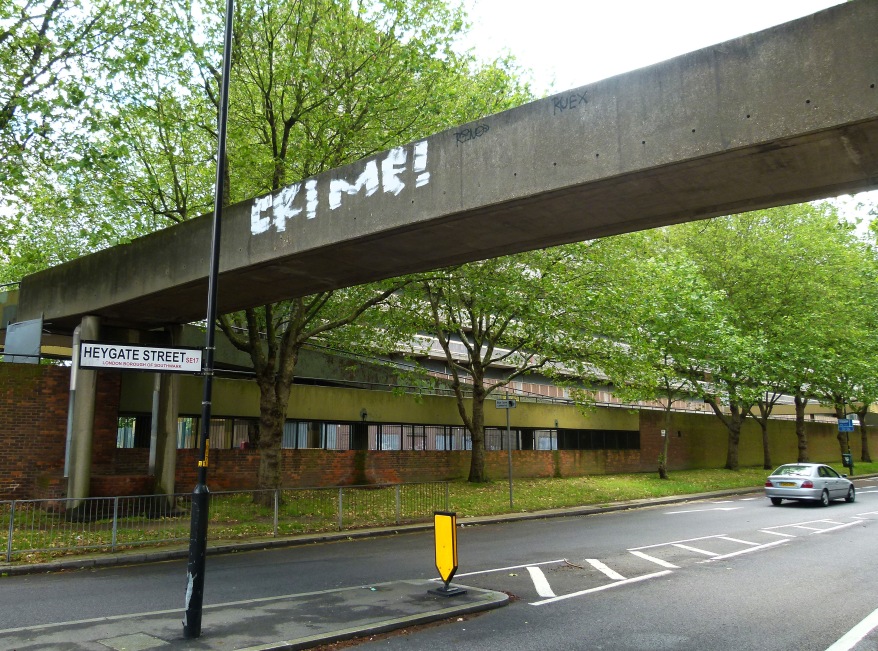







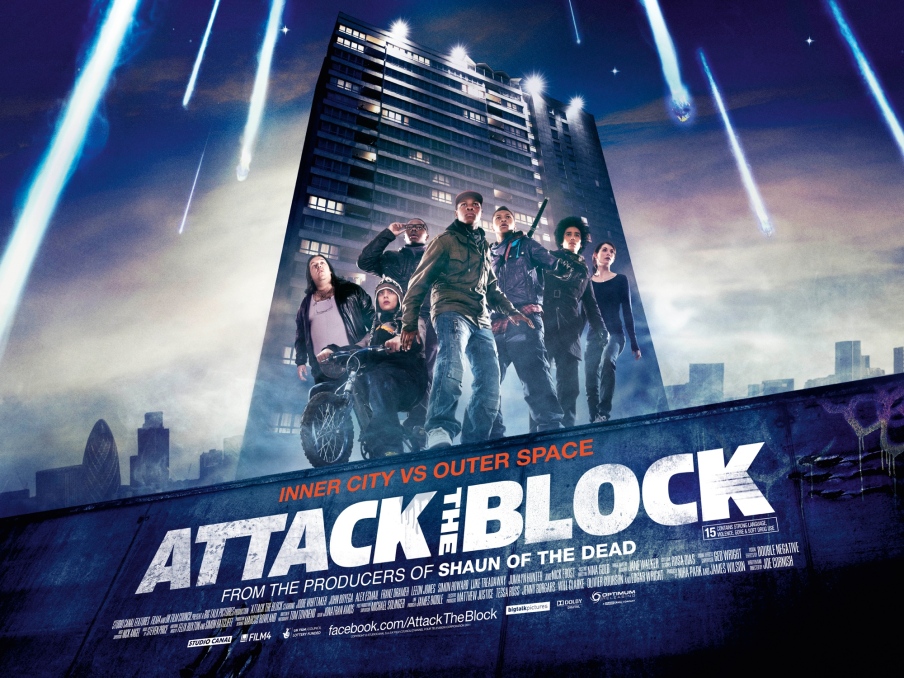






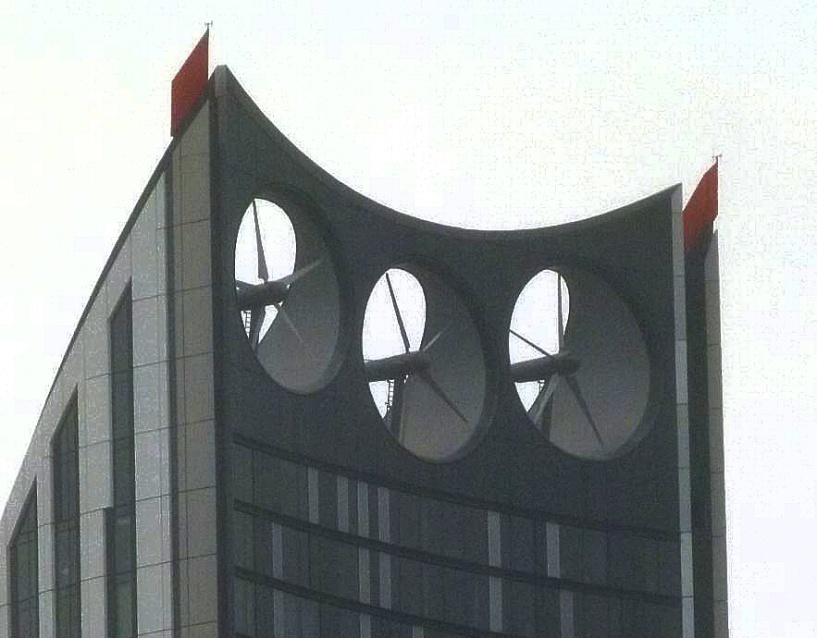


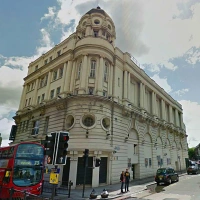
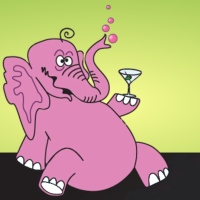
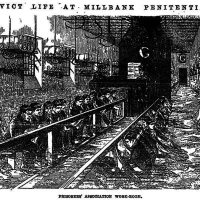
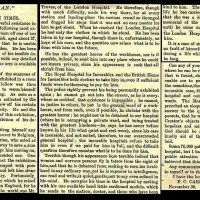

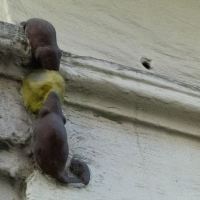

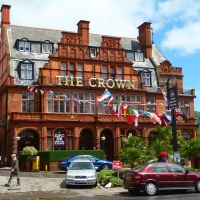

[…] Please click here for part two… […]
Coincidentally, this weekend we visited Ernö Goldfinger’s house at 2 Willow Road, Hampstead. I know that he was keen on tower blocks and this just goes to show how fallible the judgements of the “experts” can be. This is because they listen to their own bigoted fancies and don’t consider what real people living in the real world need. Unfortunately, Ernö and his fellows have done huge damage to London with their horrible constructions, most of which will not be so swiftly demolished as the Heygate.
I agree that the underpasses at the Elephant are gloomy. They are also confusing until you get used to them. I wonder whether planners could do something really innovative for once and send the vehicles underground, not the pedestrians. Burying the junction would open up a nice space for the pleasure of all.
When the shopping centre is finally demolished, I do hope that its successor will be something beautiful that the people will like and enjoy. It’s time the old Elephant was given a boost.
It is shocking just how confusing the subways down there are isn’t it. Once in them, I lose all sense of direction… just like the maze beneath Old Street roundabout! Interesting how such trends evolve.
Surely they can’t be as bad as the maze under Marble Arch, that stretch down Park Lane. That subway complex, you really can get lost in (and I have done), especially with all the dead ends, with exits into the ‘central reservation’ that’s technically still part of Hyde Park, that have been locked and closed.
Oh, couldn’t agree more… horrendous place! I still get lost down there Sundays when trying to get to Speakers Corner!
You forgot to mention the closing titles for Jim Davidson’s Thames Television sit-com, Up the Elephant and Round the Castle, that featured him sitting on the back/on top of the Elephant and Castle statue.
Surprised the Strata building’s known as the ‘lipstick’, to me, it looks like a giant Philishave with it’s trio of wind turbines at the top!
Many thanks for the comments; the blacksmith connection is fascinating, thanks for sharing. As for the Jim Davidson link… well, I do know ‘Up the Elephant, Round the Castle’, but have to assert some level of quality control at the end of the day! 😀
Fascinating stuff! Another film shot nearby is the Krays, which strayed out of the East End for the scene where one of the Kemp twins gets in a fight outside a shop – Walcot Stores on the junction of Walcot Square and Sullivan Road
Ah yes, I know the scene you mean! Knocks the bloke over the car 🙂 Thanks for the kind words, Rich.
Do you know who painted the Elephant & Castle depiction of the fire storm? I’d like to know for a paper I’m writing. Thanks!
Hi Megan, I’m so sorry but I have no idea… I’ve tried to find out myself so I can give the painter credit 😦 Hope you have more luck.
I haven’t been to find out. If I ever come across the name, I’ll let you know. Thanks anyway!
Thanks 🙂
A great post – I’m very interested in South London history, and hope you continue to write more. Thanks very much!
Many thanks for your kind words, Jack 🙂
Great article, really enjoyed reading this post, as a Yorkshire girl living in South London it’s so interesting to learn the history of the places I see everyday. Looking forward to your next installment!
Hi, Jen you’re very welcome! Thanks for reading 🙂
Great work! Splendid photos & text, thanks. Great Buddy Holly photo, I wonder if any poster for the show survives. Inspirational and amazing link with SE London and one of the original rockers from USA. There used to be a lot of teddy boys in the area too, see the amazing photo book ‘The Teds’ with 70s photos of teds at Elephant pubs (all long gone of course). I am confused about the Trocadero though, was that demolished before the modernists cinema was built (opposite the current coronet)? BTW Changing the subject: has anyone noticed that the Faraday Memorial is getting very damaged by the building work on the roundabout? There are sadly lots of dents in the metalwork. There are still building materials etc leaning directly on the memorial. I think it will be very hard to repair. I guess we need to alert the authorities. Over & out, cheers for the great blog!
Hi Paul,
Thanks very much for the kind and interesting comment.
That’s a really good question about the Buddy Holly poster. I’m sure there must be one or two out there in private hands, I’d love to see one if so.
Great to think about the Teds roaming the area 🙂
I believe the Trocadero was demolished first, although I’d have to check to be sure. And as far as I know, the current developments in the area include the preservation of the Faraday memorial…let’s hope they live up to their promise.
Thanks again mate, much appreciated.
great to know more about the history of the Elephant where I live at the moment.. thanks! 🙂
Thanks, Helen 🙂
Do you know the fate of the (pink) elephant statue from the shopping centre? I heard a few years ago that it had been removed and was going to be scrapped. As this is all that is left of the Victorian “Elephant and Castle” pub it would be a great shame if that was to happen!
I and my 2 brothers were all born at the hospital, which incorporated the New Lambeth Workhouses on Dugard Way mentioned in your post, now the Cinema Museum.
Hi John,
Thanks very much for the comment, it’s always nice to hear from people who have a direct link with the places I write about. The pink elephant statue is still very much in place- unless it’s been moved in the past few weeks! I’ll keep an eye out next time I’m driving past.
Thanks again.
the statue is still very much in evidence
[…] Those 110 maps would be indispensable as records of the attacks—and as guides during the city’s reconstruction. Today, they are of tremendous value as artifacts of London’s history and urban development. Much of what was devastated in the 1940s was subsequently rebuilt and modernized, explaining why certain streets lined with Victorian homes also include blocks of 1960s low-rise apartments. Some neighborhoods, like Elephant and Castle, sat all but demolished for decades before serving as a blank slate for car-oriented, post-war architecture. […]
It has been great reading this information. I was born and lived at the Elephant & Castle, Arrol House, Rockingham Street from 1966-1972. I remember the cinema, the Charlie Chaplin Pub and the Wimpey bar that used to be there. Visiting is always a pleasant but shocking experience seeing how things have changed over the years.
Many thanks Janet 🙂
1826 sketch of the Elephant and Castle on British Museum website.
http://www.britishmuseum.org/research/collection_online/collection_object_details.aspx?objectId=1622868&partId=1&people=120352&peoA=120352-2-60&page=1
In the late 1960’s the Charlie Chaplin featured a great R&B band led by an American organist who surname was Campbell. I am driving myself nurs trying to remember his first name even though I played with the band for a time. Can anybody put me out of misery?
[…] from the Mirror. (2017). A History of the Elephant & Castle (Part Two). [online] Available at: https://blackcablondon.net/2012/10/26/a-history-of-the-elephant-castle-part-two/ [Accessed 14 Jan. […]
Interesting article. Having lived in the area for almost 70 years I noticed a few inaccuracies but on the whole quite informative. The planners and Goldfinger have a lot to answer for. Local people had a high street, London Road, which was forced to close to enable the terrible shopping centre to thrive. The Trocadero was a beautiful art deco cinema/theatre where Frank Sinatra, Ella Fitzgerald, Cliff Richard, Bill Hayley and many others performed. Denis Norden was the manager there. Fortunately the shopping centre is soon to be demolished but the character of the Elephant has surely been destroyed by selfish, think they know best, but would never live in such a place planners! Hope I am still about to see the redevelopment come to fruition, who knows?…………..
[…] The coaching inn, which later became a pub, served this area of south London well, but was demolished in 1959 after suffering huge damage during the wars. […]
Such an interesting read, thank you! The subways beneath the roundabout remind me of my childhood!